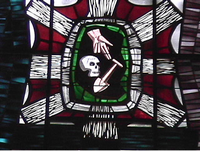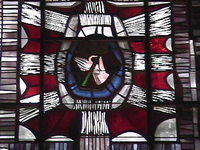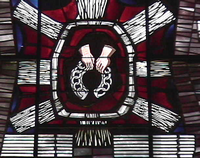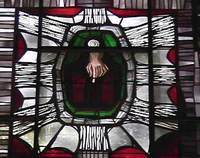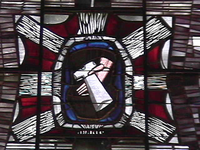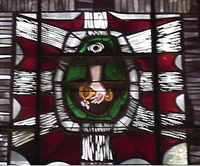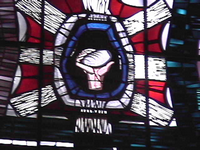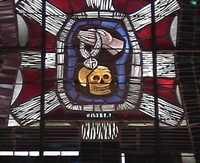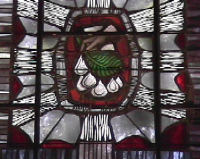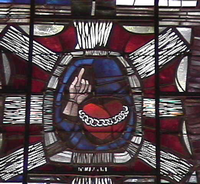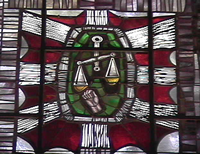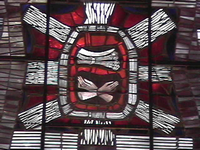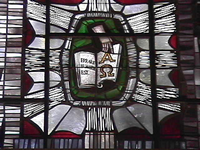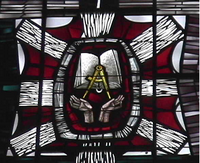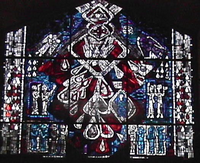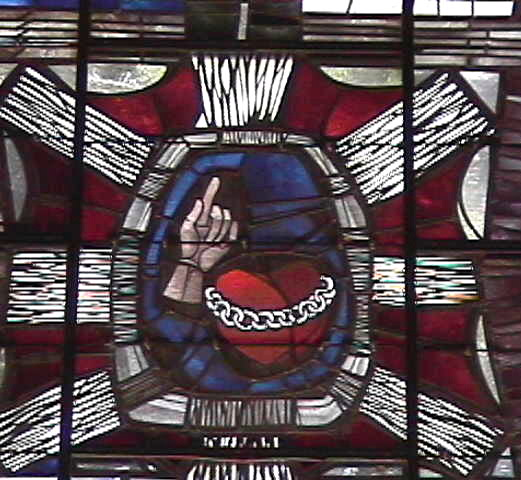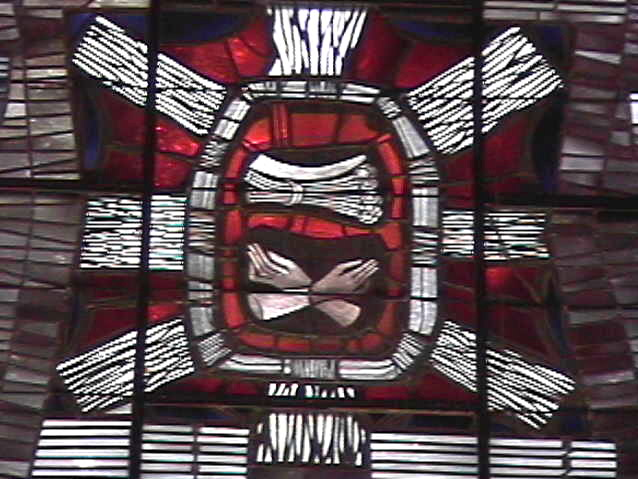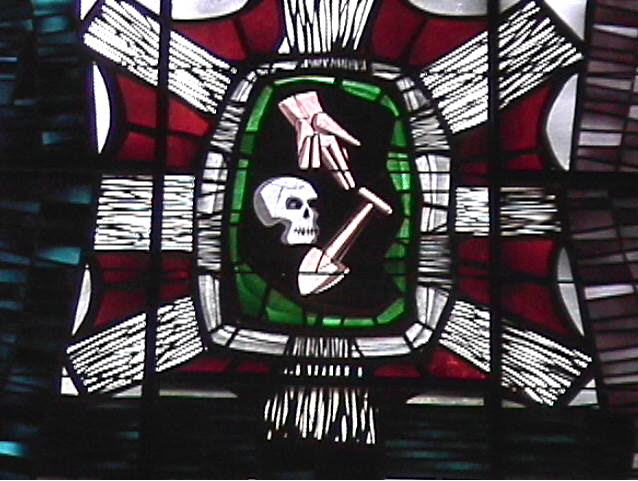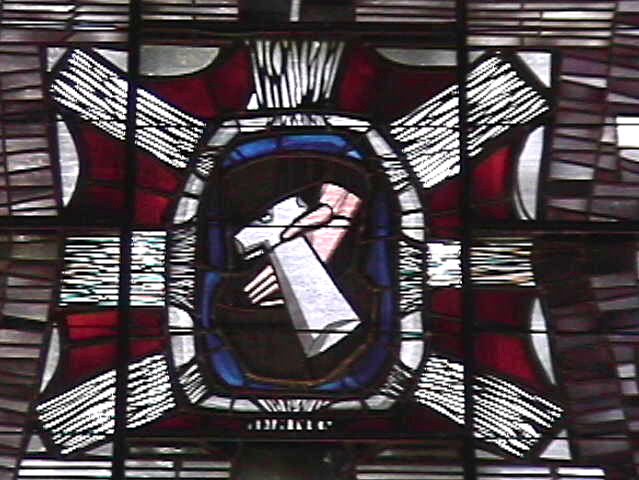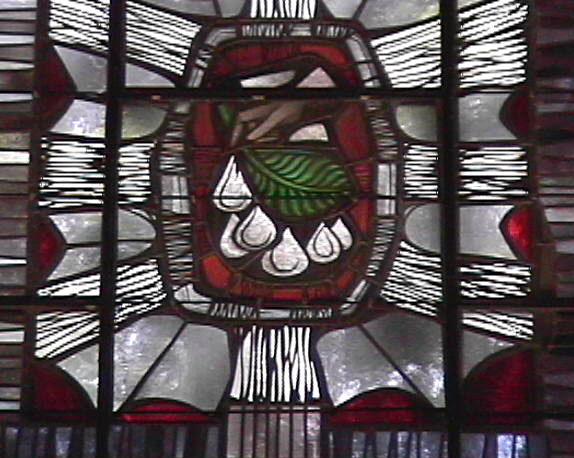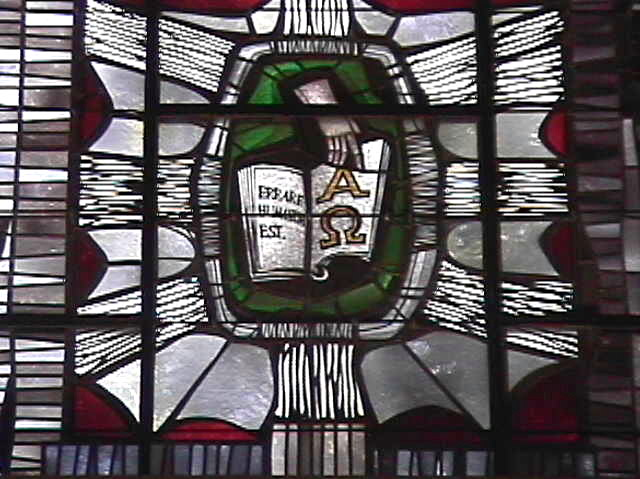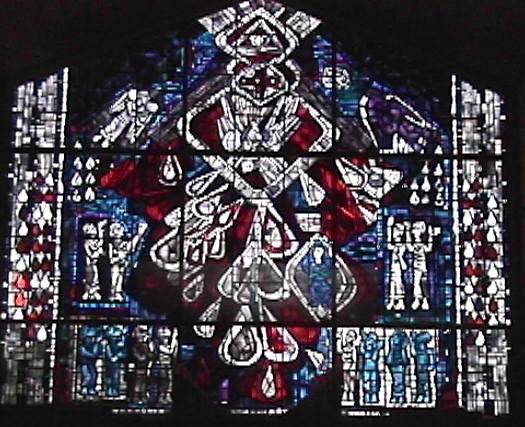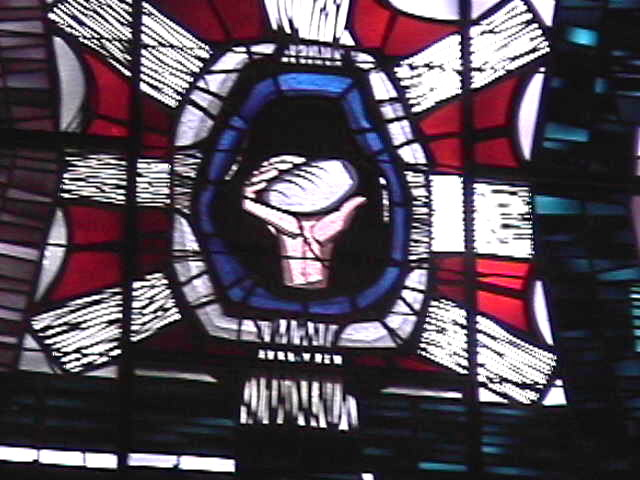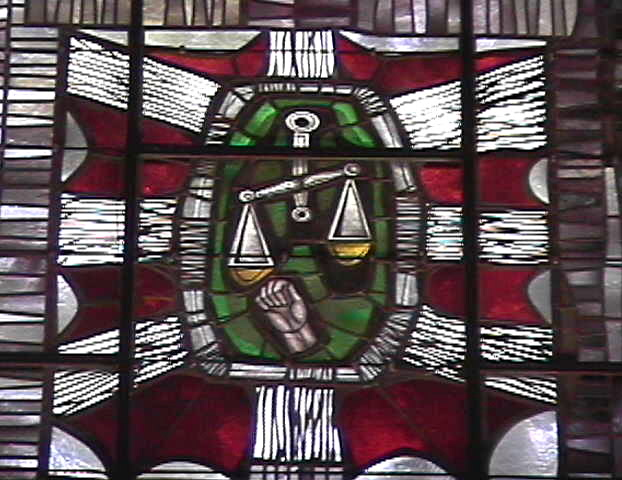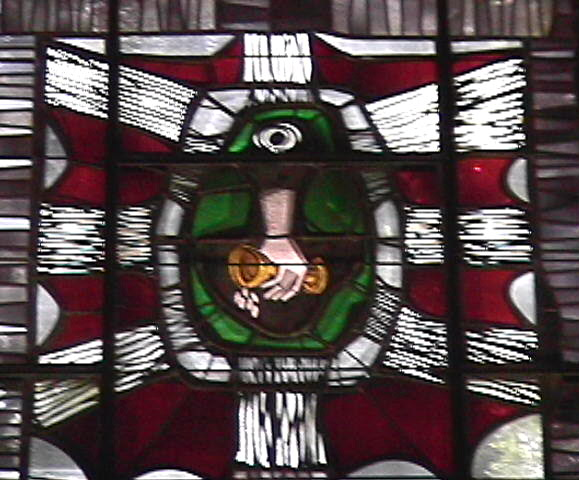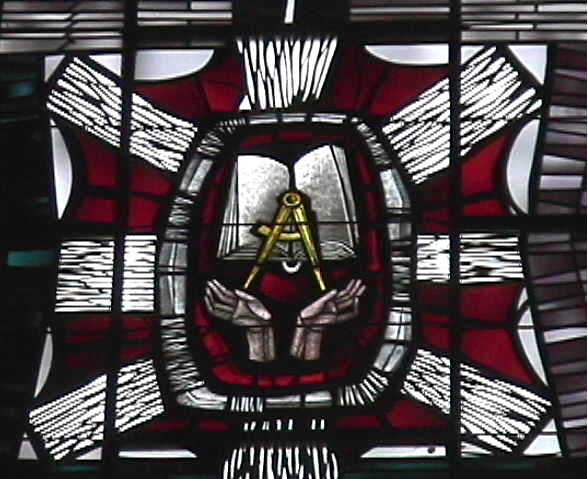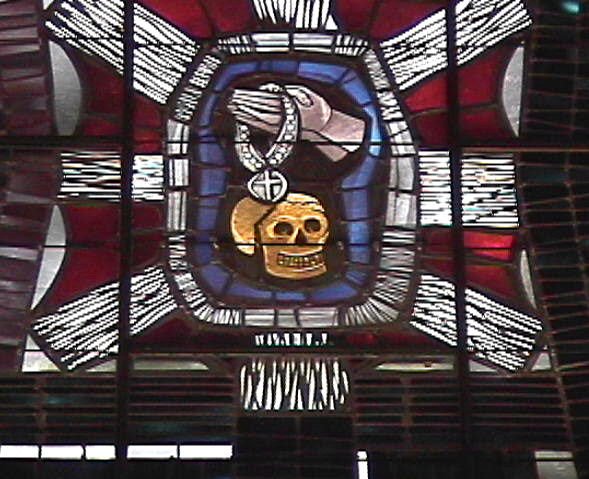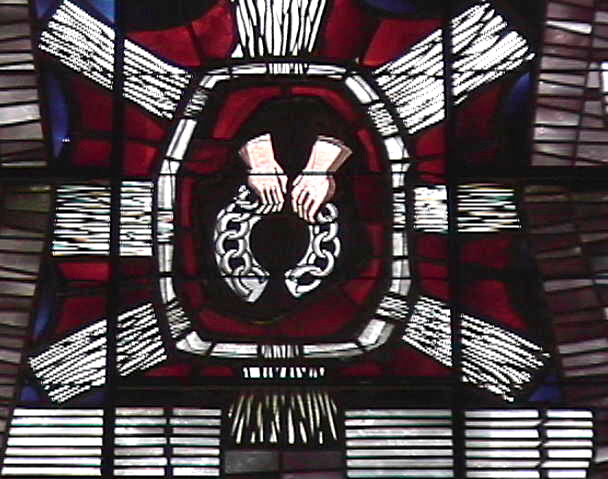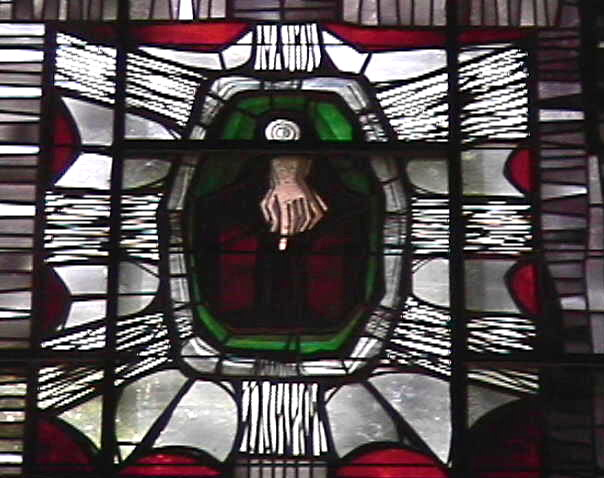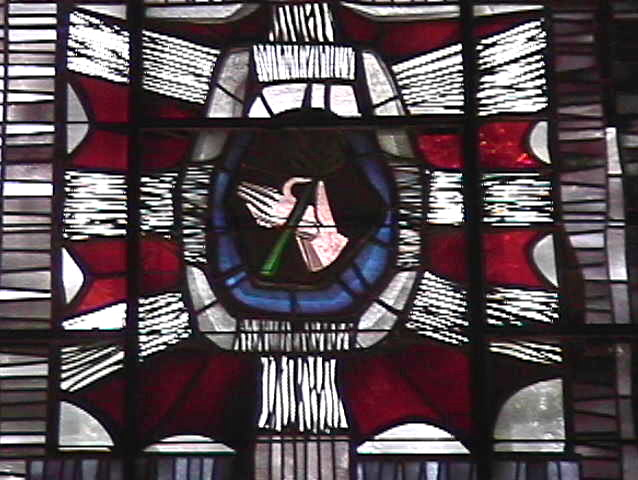Stain Glass Windows
This page tells of the meaning of each icon in the stain glass windows in the church.
Together, the lower windows have the Apostles' Creed.
The upper west windows are the seven Corporal Works of Mercy: Bury the Dead, Visit the Sick, Ransom the Captive, Shelter the Homeless, Clothe the Naked, Give Drink to the Thirsty, Feed the Hungry
The upper east windows are the seven Spiritual Works of Mercy: Pray for Living & Dead, Comfort the Sorrowful, Admonish the Sinner, Forgive Injuries, Bear Wrongs Patiently, Counsel the Doubtful, Instruct the Ignorant
The spiritual and corporal works of mercy are charitable actions by which we come to the aid of our neighbor in his spiritual and bodily necessities. Instructing, advising, consoling, comforting are
spiritual works of mercy, as are forgiving and bearing wrongs patiently. The
corporal works of mercy consist especially in feeding the hungry sheltering the homeless, clothing the naked, visiting the sick and imprisoned and burying the dead. Among all these, giving alms (money) to the poor is one of the chief witnesses to fraternal charity (brotherly love); it is also a work of justice pleasing to God.
The spiritual and corporal works of mercy seek to help alleviate human misery – material deprivation, unjust oppression, physical and psychological illness and death. Such misery is an obvious sign of our inherited human frailty and need for salvation as a consequence of original sin.
Everyone is obliged to perform the works of mercy, according to his own ability and the need of his neighbor.
It is important to remember that ordinary deeds done every day to relieve the corporal or spiritual needs of others are true works of mercy, if done in the name of Christ. Taking care of children, teaching children and adults about the faith, caring for elderly parents or a sick child or spouse are some examples.
The entrance window depicts the Descent of Divine Life.
Click on any window for a larger view. You may also
download a PDF file of the church windows.
